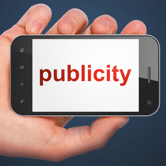What is the Right of Publicity?
This page has been peer-reviewed, fact-checked, and edited by qualified attorneys to ensure substantive accuracy and coverage.
The right of publicity protects a plaintiff’s identity being used by others for non-protected commercial purposes. The plaintiff’s identity means any attribute of an individual that serves to identify that individual to an ordinary, reasonable viewer or listener, including but not limited to the plaintiff’s name, signature, photograph, image, likeness, or voice. The right of publicity is violated when the unauthorized commercial use of a plaintiff’s identity occurs. A commercial use occurs when the defendant offers the plaintiff’s identity to promote the sale of products, services, or fundraising.
Elements for the Right of Publicity
The plaintiff must show certain elements to make a publicity rights claim. Sometimes these elements are statutory, sometimes they are based on common law. A plaintiff must generally show that the defendant:
- Used the plaintiff’s identity.
- The defendant appropriated the plaintiff’s name and likeness to the defendant’s commercial advantage.
- The plaintiff gave no consent.
- The plaintiff had an injury.
★★★★★
“Trust me, you don’t want to get into these messes, but I feel a lot more at ease having spoken with the kind folks here at Minc Law. It really won’t hurt to call and assess your options.”
JMS, January 25, 2022

Defenses for the Right of Publicity
There are five common defenses to the tort of right of publicity. The first defense is using a person’s identity to portray that person in a work of art as long as there is not a commercial profit. Second, is using the plaintiff’s likeness for non-commercial purposes. For example, using the plaintiff’s likeness for news, public affairs, sports, and politics. Third, is the exception for professional photographers that allows them to display their work at their place of business.
Similar to defamation, a fourth defense is that the plaintiff consented to the publication. A fifth defense is the statute of limitations has expired. This term describes the maximum amount of time the plaintiff can wait before bringing a lawsuit. In the right of publicity cases, the statute of limitations ordinarily runs from the date of first publication of the offending facts. It is common to be anywhere from one to three years.
Damages for Right of Publicity
A victorious plaintiff can collect their actual damages and the defendant’s profits that result from the violation. Punitive damages may be available for willful violations. A court also may issue injunctive relief.
The law of the right of publicity is complex. If you believe that you are a victim of the right to publicity then contact the experienced internet defamation attorneys at Minc Law to evaluate your case. The laws regarding the right to publicity vary depending on the state. Call (216) 373-7706 or fill out our online contact form today to find out more information.
